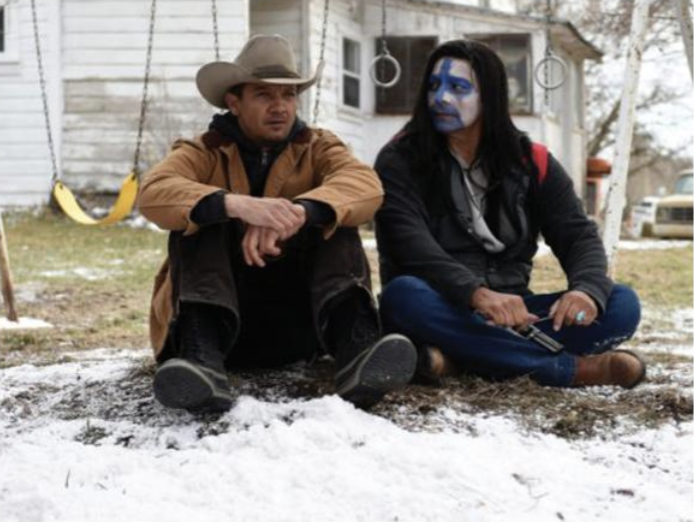By: Sarah O’Connor, Staff Writer
I traveled to the movie theaters recently, but having already seen It and the romantic comedy Home Again, I was at a loss for what to see. Looking at my choices online at the local Nickelodeon theater, I spotted Wind River. I had neither heard of it nor seen the trailer, but I decided to take a chance because the acclaimed actor Jeremy Renner starred in it. It was well worth the risk.
The movie begins with a stark landscape, white snow, and an infectious cold feeling that envelops the entire film as a young girl runs through the snow, barefoot. The murder mystery takes place at the Native American reservation in Wyoming, Wind River. Jeremy Renner’s character is a hunter that finds a girl in the snow, raped and dead, and helps an FBI agent, Elizabeth Olsen, find justice for a young woman in a place where justice is rarely found.
The movie is beyond excellent. The story builds into a thrilling climax, and the tragedy is resolved in the most pleasing way possible. While much of the dialogue is excessive and unnecessary, the characters ring true. Renner is brooding but relatable, and Olsen is flustered but empathetic to the Native Americans. While Renner was exceptional for the role, I couldn’t help but wonder why a Native American wasn’t cast. It seems that white-washing ruled again, but unfortunately, it seems it was necessary. I only chose to see Wind River because he was in it.
What stands out most in the movie is the last 10 seconds. The movie reveals that there have been no missing persons reports filed for Native American women — ever. In fact, the Department of Justice found that 84% of Native American and Alaskan Native women have experienced violence and 56% have experienced sexual assault. Director and writer Taylor Sheridan does not shy away from the suffering that Wind River goes through. The viewer is forced to suffer with these people during the film as they witness poverty, drug abuse, violence and sexual assault. Wind River is based on true events, and the true statistics show that the life expectancy for Native Americans in the reservation is 49 years and the unemployment rate is over 80%. It is hard to believe that these statistics exist in the United States.
Wind River uses its story to bring those statistics to life. Sheridan displays the hardships of living on the stark lands of Wyoming, where it seems it will never warm up, and creates characters that are quick to love and hate. He uses imagery to display the flaws of the United States.
While Wind River ends with justice, the harsh reality is that most of these cases are left unresolved. Seeing this movie has opened my eyes to the horrors and cruelty both men and women face on these reservations. It is a pity that Wind River was not publicized enough, because everyone needs to see it. While it is depressing and hard to watch, we must watch it because things need to change for these Native American men and women.

